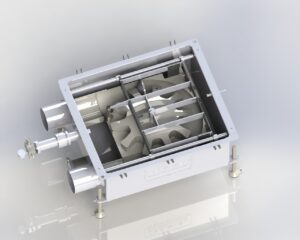Dust explosions are devastating safety incidents that may occur in a wide array of industries, such as petrochemicals, food, paper, and pharmaceuticals. Dust explosions in the process industry may result in numerous casualties and cause irreparable damage to the process industry facilities.
Dust Explosions in the Process Industry – A Serious Safety Concern
According to the Chemical Safety Board (CSB), an independent agency that conducts severe chemical incident investigations, there were 111 cases of explosions between 2006 and 2017 in the United States, leaving behind 66 fatalities and 337 injuries. Another CSB study from 2006 showed that the food industry has the highest incident rate, with 24% of all explosion cases occurring between 1980 and 2006. Therefore, these blasts have been recognized as a major safety risk that needs to be tackled with utmost caution and attention.
To protect industry workers’ lives, OSHA devised and started implementing a Combustible Dust National Emphasis Program (NEP) in 2008. This comprehensive safety plan provided procedures for dust hazard inspection, accompanied by policies that industrial plants need to apply to reduce dust explosion risks and guidelines on complying with the NFPA standards.
Relying on Experts for Resources on Dust Explosion Prevention
Industry safety experts can rely on other useful resources when tackling explosion problems. Rolf K. Eckhof, a Professor Emeritus of Process Safety Technology in the Department of Physics and Technology at the University of Bergen, Norway, shared his knowledge on the topic in his book “Dust Explosions in the Process Industries.”
This book’s 3rd edition provides advice on the identification, assessment, and control of hazards. As the book description says, “It is imperative that practical and theoretical knowledge of the origin, development, prevention, and mitigation of dust explosions is imparted to the responsible safety manager.” This book also offers an updated evaluation of prevalent activities, testing methods, design measures, and safe operating techniques.
Industry safety consultants and students may find a detailed review of all the significant phases relating to hazard and blast control. As stated in the “Journal of Loss Prevention in the Process Industry” review, “This book is an account of all dust explosion aspects and will be an invaluable source of information to all safety or loss prevention specialists involved with dust explosion hazards.”
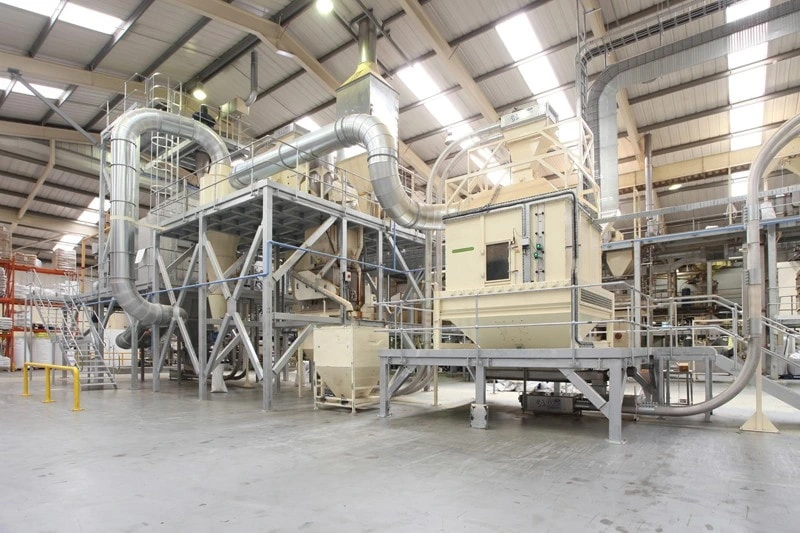
What Is a Dust Explosion?
This potentially deadly incident happens when particles build up in the air and combust rapidly, creating a violent pressure wave. Dust explosions present serious safety risks to processing and manufacturing industries, like food processing, coal mining, wood processing, pharmaceutical components manufacturing, and others. Several factors are required for a blast to happen:
- Combustible dusts,
- Oxygen,
- Enclosed space,
- Ignition source.
Factors That Contribute to Dust Explosion Occurrence
Besides the factors mentioned above, one of the decisive factors for whether or not the dust blast will occur is the particle concentration. Namely, a dust explosion is highly unlikely to happen when the particle concentration level is not high enough to fuel it. Similarly, when the concentration of combustible dusts is too high, there is not enough oxygen to induce an explosion.
Combustible dusts that contain finer particles are more dangerous because they disperse easily, covering larger surfaces and making them highly flammable. According to the OSHA Fact Sheet, when the right particle concentrations are combined with enough oxygen in a confined space near an ignition source, the so-called dust explosion pentagon is formed, and a severe incident occurs.
How Does the Explosion Occur?
Anything from a cigarette to a spark coming from an overheated wheel bearing can ignite a dust explosion. Once ignited, the dusts combust rapidly, creating a high air pressure wave. Frequently, the first blast stirs another cloud, leading to the second explosion.
Detailed case studies showed that these second dust explosions are more violent and destructive. A second explosion occurs shortly after the first one, causing irreversible damage to facilities and endangering workers’ lives.
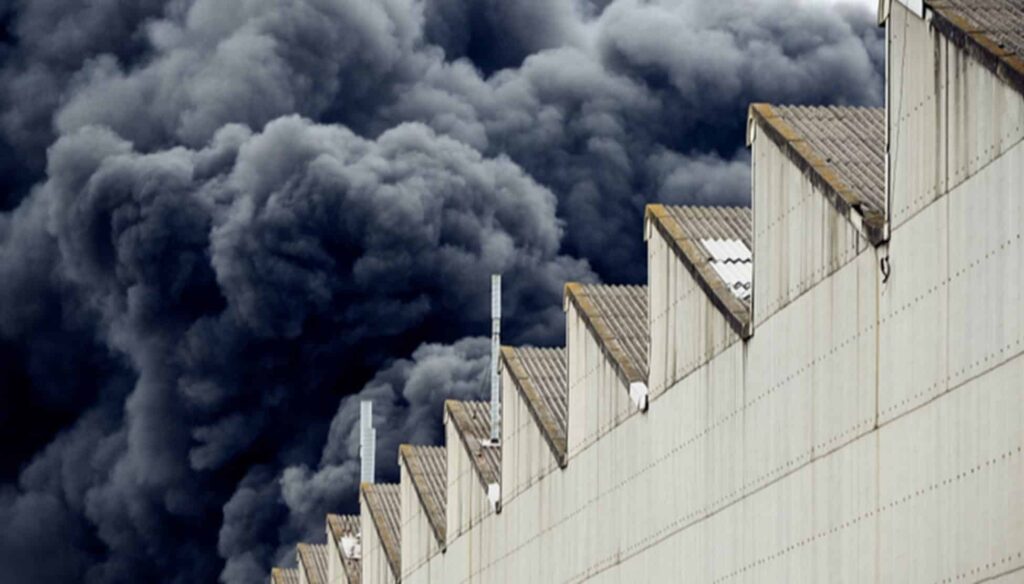
What Are the Explosion Hazards?
Some dusts, like coal, grain, and fertilizer, are easily recognizable as blast risks. The problem is that there is a wide range of other powders that may present serious fire or explosion hazards in industrial plants. Unfortunately, catastrophic explosions at Imperial Sugar Company in 2007 were unprecedented safety incidents for those unfamiliar with blast risks.
The high concentration of combustible sugar dust incited a series of devastating explosions, causing 14 deaths and injuring 38 workers, 14 with life-threatening burns. The question that puzzled the OSHA inspectors and workers after this severe incident was, “How can a powder, a solid, typically non-hazardous material like sugar or plastic, become a fire or explosion, i.e., a deflagration risk?”
Understanding the Material’s Chemical Nature Is Crucial in the Prevention of Hazards
An in-depth understanding of the finely ground materials’ nature and how fires work is necessary to realize why these hazards exist. First, a fire is an oxidation reaction, meaning that all materials prone to oxidation present a fire or explosion risk. An excellent example of such a material is an iron bar. When exposed to the air, an iron bar will slowly rust, and this oxidation process may take days, weeks, or even months.
While a single rusty iron bar does not present a blast risk, a ground iron bar containing fine particles certainly does. This is because iron dust has a significantly higher surface area that will react with oxygen much more rapidly. The finer the particles, the faster and stronger the chemical reaction will be. This ignition of particles releases heat, causing the gas around the particles to expand and create a flame front.
When the flame front moves at a speed lower than the speed of light, this is referred to as deflagration. When deflagration occurs in an enclosed space, it results in increased air pressure because the enclosure walls confine the internal gas expansion. This leads to a blast, with the expanding pressure wave causing irreparable damage to the enclosed area. This process may occur with any material that can oxidize, releasing heat. Therefore, most organic chemicals in the form of fine powders may present dangerous blast risks.

How to Reduce the Risk of Explosion?
Understanding that dusts may present serious fire and blast risks enables safety consultants and other safety experts to determine what measures to implement to bring process industry facilities into compliance with OSHA’s NEP standards. The crucial goal is to eliminate the leading causes of potentially catastrophic explosions in these facilities, even though it may not be possible to remove all deposits.
The first step towards this goal is to reduce combustible particle accumulation on exposed and hidden surfaces inside the plants. As already stated, secondary explosions can be responsible for massive devastation and loss of life within the facility. These explosions happen when the pressure wave from an initial blast lifts particles accumulated on horizontal surfaces into the air, where they are ignited and form an explosive cloud. As these explosive particles extend quickly from the primary ignition source, they cause catastrophic damage, severe injuries, and loss of life.
According to the National Fire Protection Association (NFPA), particle concentrations of 1/32nd of an inch, similar to the thickness of a paperclip, are sufficient to cause a blast when dispersed near an ignition source. For this reason, the removal of accumulated particles is the primary concern of OSHA’s NEP plan. Therefore, three crucial measures need to be implemented to reduce the hazard by lowering particle concentration:
- Problem areas identification,
- Combustible particle identification,
- Dust hazard elimination.
Paying Attention to the Most Common Hazards in the Processing Industry
A hazard may exist in the process industry facilities where powdered materials escape the processing and conveying equipment, settling on various horizontal surfaces near the particle source. The particles are usually on the top of the equipment, stairs, railings, light fixtures, and so on.
While the visible surfaces are cleaned regularly, the explosive particles may accumulate excessively on hidden surfaces that are often overlooked. These problematic surfaces include roof support components, equipment parts above eye level, elevated ductwork, piping, and cable trays. Thus, regular cleaning of exposed and hidden surfaces within the facility is a crucial factor in reducing hazards.
Identifying whether a particle is hazardous or not is the second-most significant aspect in curbing the risk of a blast. As we already concluded, not all dusts present a fire or explosion risk. While everything should be cleaned for safety reasons, the focus is on combustible particles that may cause severe explosions.
NFPA Guidelines Can Help With Implementing Safety Measures in Production Facilities
Safety professionals need to make an inventory of all powder materials and review material safety data sheets to identify potentially risky powders. If these data sheets are incomplete, safety professionals may conduct hazard testing. Several NFPA publications provide valuable information on combustible dusts. Apart from regular housekeeping, you need to inspect particle sources and primary ignition sources to eliminate explosion risks.
Therefore, you need to review process stages and equipment, close openings the hazardous particles may escape through, and reduce various ignition sources like sparks or heat. The NFPA has provided a collection of codes, standards, and guidelines to alleviate this significant process and help process industry safety consultants tackle risks.
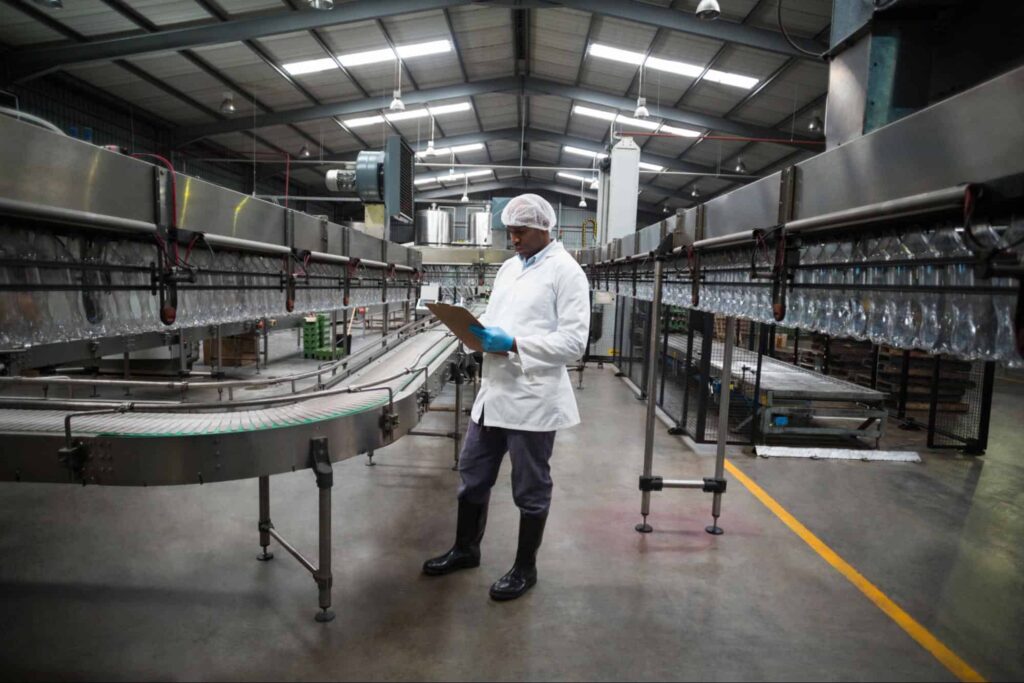
Blast Prevention and Mitigation
Serious efforts have been made recently to devise and enhance measures for the prevention and mitigation of explosions in the process industry. These efforts resulted in the development of various methods for addressing blast-related issues, like real-time explosion development prediction or ignition source prevention.
Adopting a safer process design based on in-depth knowledge, technology, and continuous staff training are keys to successful blast prevention and mitigation. In-depth knowledge of powder science is an invaluable help in assessing and controlling explosion hazards.
Within the last 20 years, more sophisticated and flexible methods have replaced simple schematic ones. During this time, systematic research, accompanied by practical implementations, has resulted in adequately designed mitigation measures. For example, systems for explosion venting, suppression, and isolation stemmed from the understanding of flame propagation processes.
Dust Explosion Development Prevention and Mitigation
One of the significant issues related to these explosions is the rapid propagation of flames in particle clouds. This happens because inertial forces in clouds can produce fuel concentration gradients. Also, flames may transfer a considerable amount of heat to the cloud due to thermal radiation. However, the role of thermal radiation in the development of explosions needs to be studied further.
Numerous scientists have dedicated significant time and effort to devise comprehensive mathematical models for measuring flame propagation in dust clouds. These models will help safety managers to better understand how explosions escalate. Scientists have applied a flat-flame propagation technique to measure the burning velocity precisely. According to the results, numerous factors, like particle size, concentrations, oxygen enrichment, and heat loss by radiation, may affect the propagation of flame in clouds.
This experiment drew attention to the similarity between flame propagation through dust clouds and fuel mists and the significance of radiation heat loss. Results showed that if a cloud consisted of 10 μm graphite or aluminum particles, radiation loss from particles could reduce the flame propagation velocity up to 40%.
Preventing the Generation of Explosive Dust
Everything started with Dr. Weber, one of the first experts who tackled the dust explosion in the process industry 130 years ago. He pointed out that particles’ dispersibility and concentration considerably affected cloud generation. Using the example of flour and the devastating explosions in Poland and Germany due to the high dispersibility of this material, he proved that the dispersibility of wheat flour particles increased as their moisture level decreased.
Primary explosive clouds are usually created inside the processing equipment when a sufficient concentration of particles is lifted. Handling and transporting various materials in mills, dryers, mixers, bucket conveyors, and other processing equipment usually leads to the dispersion of particles, forming dangerous clouds. These primary explosions usually cause a second, more devastating blast wave, along with catastrophic consequences.
It is important to have some information about the cloud structure to predict the cloud’s ignition sensitivity and the course of this primary blast. However, scientists have only started to develop numerical models to tackle this issue, and examples of practical use are scarce. People usually tackle the explosion problem by adding preventive measures to the existing process.
However, applying an inherently safer process approach may be a better solution. This approach implies designing a production process where none of the explosion hazards exist. This should include opting for production, treatment, storage, and transportation solutions where cloud generation is kept at a minimum.
Another practical solution is adding inert gas like nitrogen or carbon dioxide to the air. In this way, a cloud becomes less susceptible to catching flame. However, this measure should be implemented with caution because adding nitrogen to the air may present a suffocation risk.
Preventing Ignition Sources
The minimum hot-surface temperature sufficient for cloud ignition was considered a universal constant for any dust cloud in question. However, these minimum ignition temperatures may vary considerably, depending on the scale and the hot surface geometry related to the dust cloud. Therefore, we can identify several ignition sources – electrostatic discharges between two electrodes, electrostatic one-electrode discharges, glowing or burning particles, or an electrical apparatus. Although significant efforts have already been made to devise efficient measures for preventing ignition sources, these measures and standards need to be developed further.
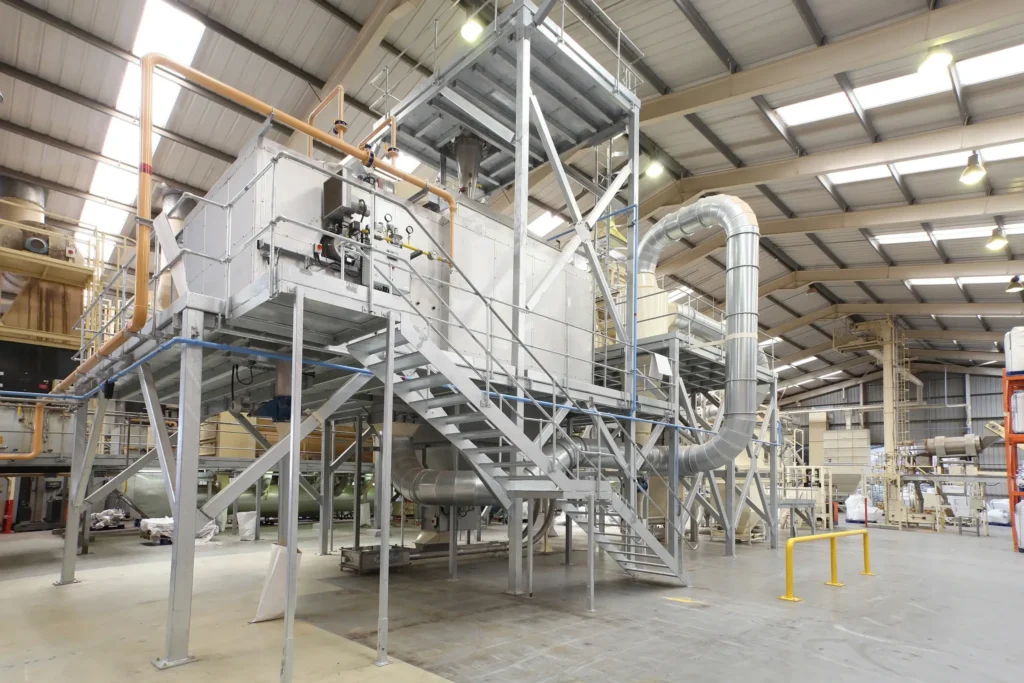
Protective and Mitigatory Measures
Crucial steps towards preventing these explosions, which protect human lives and equipment, include keeping surfaces clean, preventing particle accumulation, and reducing ignition sources. For this reason, safety consultants may consider investing in tubular drag cable conveyors that fulfill all these requirements, the perfect conveyor solutions for explosion prevention in the process industry.
Why Choose Tubular Drag Cable Conveyors
First, these conveyor technologies are designed to transport various raw materials through different process stages and have reduced the possibility of accumulating residue or particles on the cable. Namely, the tubular cable surface exposed directly to materials is 80% less than the cable chain surface. Furthermore, this uniform and smooth tubular cable conveyor is nylon-sealed, preventing accumulation within the cable strands.
Secondly, tubular drag cable conveyors offer various cleaning options, like brush boxes, urethane wipers, in-line sponges and bristle brushes, and automated CIP wet cleaning to ensure complete particle removal.
Finally, these tubular drag cable conveying systems use energy-efficient motors running on low horsepower. This way, the risk of generating sparks is minimized. Simply put, by implementing the Cablevey Conveyors system in your facility, you will minimize explosion risks by conveying various materials in a safe and energy-efficient way.
Contact Us and Improve Your Production Process With Our Outstanding Industrial Conveyor Systems
Cablevey Conveyors is here to elevate your production process with our exceptional industrial conveyor systems. Our state-of-the-art solutions are designed to meet the unique needs of various industries, ensuring efficient, gentle handling of your materials. Whether you’re dealing with food products, pharmaceuticals, or bulk materials, our tubular drag conveyor systems offer unparalleled precision and hygiene, minimizing product damage and contamination. With customizable configurations and dedicated support, we’re committed to optimizing your operations for maximum productivity and profitability. Join the multitude of satisfied clients who trust Cablevey Conveyors for their material handling requirements. Transform your production line – contact us today.


